Hummer: ‘Club-centric’ is more than a buzzword – and the proof is on the field
It’s a crisp, sunny morning, and an intense youth soccer game is unfolding between two rival travel teams.
 The field is full of young and talented players from the same community, many of which will see each other in school the next day in their 7th- or 8th-grade classes.
The field is full of young and talented players from the same community, many of which will see each other in school the next day in their 7th- or 8th-grade classes.
There is a lot of athleticism and some creativity. Some with a great first touch and savvy decision-making, others with powerful shots, and a few with blazing speed you can’t teach. Both teams have paid coaches, and the sidelines are packed. It’s a really big deal in all of their worlds, and a game that will be remembered for a long time.
+READ: Dure: If you must cut players, consider the options
Many of the players are still young enough to continue their development towards a dream of college soccer – if they’re in the right environment. An environment that includes quality coaching, facilities, opportunity and the right competitive structure.
But time is running out, as bad habits are hard to break. And while this is a “Division 1” league game, it’s not nearly as a challenging environment as other options that have sprung up in recent years in national and regional leagues.
After halftime, one team scored “against the run of play,” capitalizing on a distribution mistake by a goalkeeper facing a strong wind, combined with a defense that offered no options and was late to react when the attempted punt went right to a strong player 30 yards from goal.
Thump … bounce … “oh $#@%!” … empty net … shot … GOAL!
After the goal, no defender made an attempt to grab the ball out of the net for a faster restart now that they’re trailing in the second half. No one told the ‘keeper it wasn’t his/her fault. No defender taking responsibility and then urging their teammates that it will be okay if they all step it up and go get one back, because there’s plenty of time.
These are all the things that happen at the higher levels when a team gets scored on against the run of play. It’s a big part of culture and having a good “soccer IQ.” It was absent here.
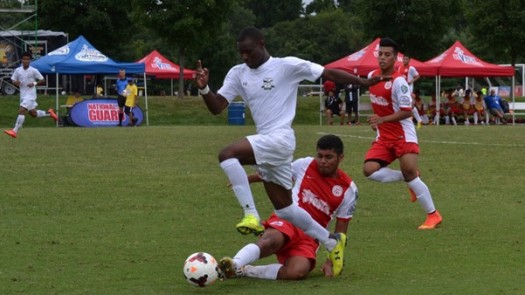 Nonetheless, once the whistle blew, the trailing team had enough players who found that desire and motivation within to step things up, which manifested into an amazing equalizer 10 minutes later. One player took a powerful shot out of nowhere into that same strong wind, from at least 25 yards out, at an angle from the left channel.
Nonetheless, once the whistle blew, the trailing team had enough players who found that desire and motivation within to step things up, which manifested into an amazing equalizer 10 minutes later. One player took a powerful shot out of nowhere into that same strong wind, from at least 25 yards out, at an angle from the left channel.
+READ: Hummer: A message to elite, uncommitted youth soccer players
It was the hardest shot of the game by any team, and came unexpectedly due to the range. But it’s the sort of shot that comes from players who are pressured to take the game into their own hands and win one for the team when everything is on the line.
Not every DoC is going to have the exact same list of wants, but they at least want to be heard and have the flexibility to be creative in the way they find the best path for each player in their club.
And when the ball found that perfect seam in the top 12 inches of goal where a 13-year-old goalkeeper just can’t get to it unless it’s directly above them, the celebratory dog pile was on! (Though no one ran for the ball to get it back to midfield so they could try and win it all…)
The player who scored had made similar runs, and used pretty much the same cutback move all game long down that channel. But this time instead of trying to cross, just wound up and whacked it home. Like many of the other players on both sides of the ball, this player showed lots of potential, is very athletic and clearly capable of moments of brilliance. The problem is they are all – but one – far from where others with similar natural athleticism are today at higher levels of play.
It was an intense game, but neither team really played with a possession style or purpose, just a lot of individual effort and passing attempts. Some passes found a mark, but more often just in the general direction of players on the same team. Only the really close passes were completed with accuracy and purpose, though they often barely relieved any defensive pressure.
 There were many great opportunities to counterattack, or at least to attack in numbers. But each one was wasted with a rushed long ball under no pressure, aimed only in the general direction of forwards sprinting in straight lines away from their teammates. Every single one of which was either picked off by a defender, or so far out of the players’ run by the time they got near it, covering defenders easily converged.
There were many great opportunities to counterattack, or at least to attack in numbers. But each one was wasted with a rushed long ball under no pressure, aimed only in the general direction of forwards sprinting in straight lines away from their teammates. Every single one of which was either picked off by a defender, or so far out of the players’ run by the time they got near it, covering defenders easily converged.
Long development plan to a short story: There was plenty of talent on the field, but if they want to reach their stated dreams of playing at higher levels, there is a ton of work to be done. And as I said above, they need to be in the right environment for that work to pay off in truly preparing them for the next level.
+READ: Hummer: GotSoccer.com has jumped the shark by ranking U-10s, U-11s
The problem?
In this league, they’re already at the top of the heap, so where is the competition going to come from to make them challenge themselves?
- Where will they be pressured into learning to play a better style of soccer by teams that can string more than three passes together on – and with tactical – purpose?
- Where will they test test themselves against opponents who punish mistakes all over the field as a team, not just with a lucky break and individual effort.
- Where will they ever get exposed up close and personal to teams and players that make you realize there IS another level to shoot for?
Increasingly, the answers to these questions all over the United States is “in another league”, and that is why there is so much change going on in youth soccer’s competitive power structures today.
Amid the game’s decades of explosive growth here, plenty of youth leagues (and tournaments) have actually had it pretty easy, especially on the girls’ side. They had everything they needed. Strong, ambitious teams waiting in line to get in; and all the top coaches fighting to get to the top, win state cups, willingly encourage their top players to tryout for ODP, and then help them find a college opportunity.
 But then something happened. The Elite Clubs National League was born. And it wasn’t the league’s birth itself that was the catalyst for this downward trend among traditional leagues; the ECNL was just the result. The catalyst was more of a multi-year groundswell of frustration that coincided directly with the growth of professionalized youth club structures and paid coaches.
But then something happened. The Elite Clubs National League was born. And it wasn’t the league’s birth itself that was the catalyst for this downward trend among traditional leagues; the ECNL was just the result. The catalyst was more of a multi-year groundswell of frustration that coincided directly with the growth of professionalized youth club structures and paid coaches.
It would be romantic to connect that move to the realization that “women can really play this game” after the U.S. Women’s National Team won the 1999 Women’s World Cup on home soil, but I have no evidence of that.
However the ground swell began, one day late in the last decade, a lot of the top coaches who all saw each other several times per year at major showcase tournaments and national championship events got together, and said enough is enough.
All over the country they were dealing with what they saw as 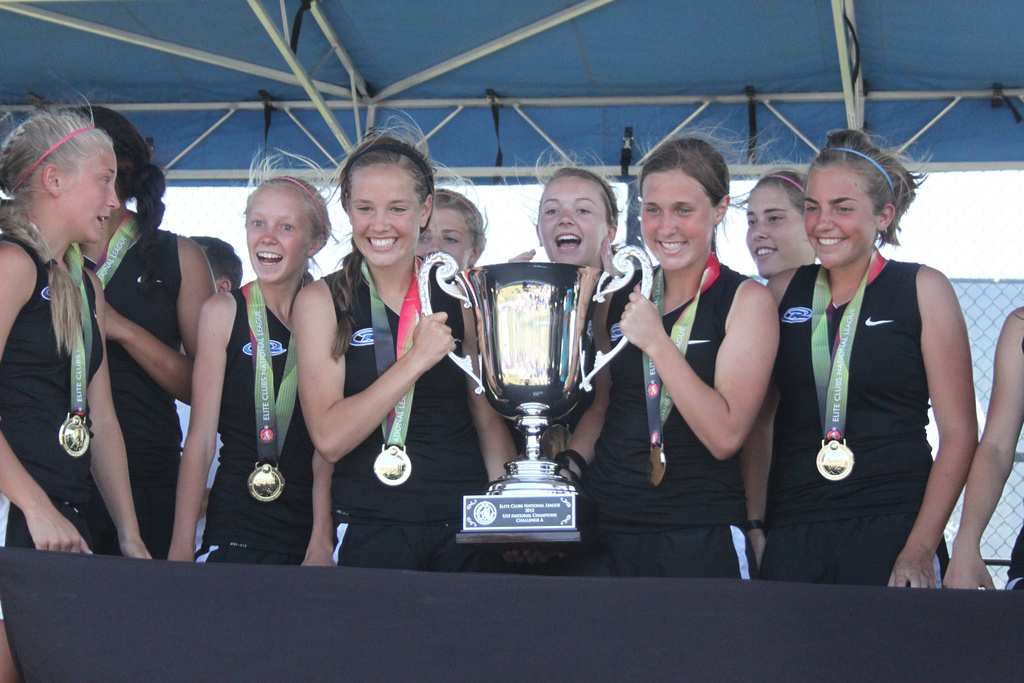 archaic rules, bureaucratic decision processes for simple solutions, and very few people who ever actually played – or even coached beyond their own kids’ recreational teams back in the ‘80s – making all the important decisions about the competitive environment without really understanding what player development was all about.
archaic rules, bureaucratic decision processes for simple solutions, and very few people who ever actually played – or even coached beyond their own kids’ recreational teams back in the ‘80s – making all the important decisions about the competitive environment without really understanding what player development was all about.
These mostly volunteer bureaucrats, did then, and many still do now, focus too much on the financial side of their organizations as the primary measure of success and operational efficiency. Their organizations resemble many old, lumbering industries that never had to fight for customers or provide much real service. No matter how well-meaning and admirably dedicated they are; many people in charge of deciding where a regional championship should be played, whether to allow guest players, what game formats and field sizes should be used, or division alignments; hold even a minimal coaching license or have run a real training session for a competitive travel team in years.
+READ: Hummer: How long until someone dies of heatstroke on a synthetic turf field?
“We can make our own league, and we can be in charge,” said those coaches. “And if we all stick together it can be the best league in the country from day one.”
…for leagues that care about playing a real role in helping develop World Cup winners of tomorrow, it may already be too late.
The model for the ECNL was there already in the form of the U.S. Soccer Development Academy for boys. But that league was reportedly running U.S. Soccer about $5 million per year in the red, and there was no chance they were ready to start down the same path for girls (even though we were still the No. 1 women’s team in the world)… So the founding ECNL clubs did it themselves, expanding from member clubs having participated in the short-lived Red Bull National League. And while it took some clubs longer to be convinced and join in, ECNL has already grown far beyond anyone’s realistic expectations and is now the holy grail of every ambitious club in the country, even if they won’t admit it in public.
And it’s implicitly challenged established youth soccer entities to be better. More nimble. More ambitious. More competitive. While the Development Academy is centrally controlled by the Federation, it’s had a roughly similar effect on the boys side, where college scholarships are fewer but the professional game offers more opportunities.
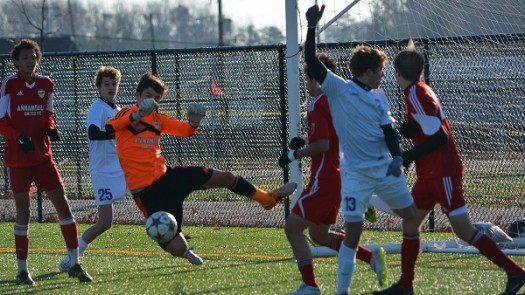 To be fair, ECNL wasn’t the first “club-centric” league: that nod most likely goes to the Virginia Club Champions League – recently reborn as just the Club Champions League, now that it’s grown well outside the commonwealth’s borders. But ECNL was from day one the biggest and most competitive club-centric league in the country, and in very short order, has become THE place nearly every female player with talent and college scholarship ambition wants to be playing if at all possible (NOTE: “Playing,” not sitting on the bench).
To be fair, ECNL wasn’t the first “club-centric” league: that nod most likely goes to the Virginia Club Champions League – recently reborn as just the Club Champions League, now that it’s grown well outside the commonwealth’s borders. But ECNL was from day one the biggest and most competitive club-centric league in the country, and in very short order, has become THE place nearly every female player with talent and college scholarship ambition wants to be playing if at all possible (NOTE: “Playing,” not sitting on the bench).
+READ: Hummer: ECNL all-stars’ England trip breaks new ground for elite girls’ soccer
I say “nearly,” because there are still very good clubs, with great coaching and access to pockets of quality competition that will no doubt continue to develop and send players on to higher levels. But it’s hard to imagine players on those teams wouldn’t move to an ECNL team if they had a reasonable expectation to be a regular starter, and also didn’t need a helicopter (the Sikorsky type, not parents) to commute to practices in a reasonable amount of time.
This is a league that attracts multiple college scouts to single, regular season games, contributes a majority of the youth national team pool, and has HUNDREDS of college scouts at their national showcases.
Why?
Because it’s a club-centric environment where top coaches make all the competitive structure decisions.
Club-centric is the first necessity for the right development environment. Even if the league you’re in isn’t a “club-centric league,” the club you’re in should be if you want to have an opportunity to grow as a player at YOUR pace. That pace should not be dictated by independent coaches who have more personal interest in keeping their best players to win games instead of pushing their best players on to a higher levels.
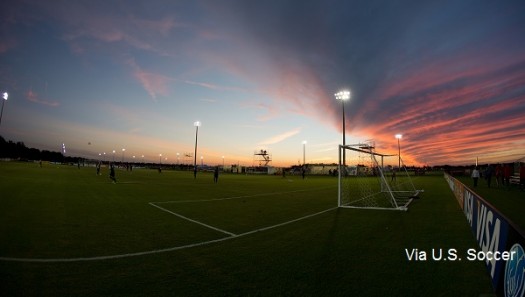 It’s like a math department head holding back a top student just to raise their average test scores rather than put the kid into an AP class! It just shouldn’t happen, yet it is by FAR the way things work in most youth soccer clubs in the U.S.
It’s like a math department head holding back a top student just to raise their average test scores rather than put the kid into an AP class! It just shouldn’t happen, yet it is by FAR the way things work in most youth soccer clubs in the U.S.
- If you’re the best player on your club’s “B” team, you should move to the “A” team.
- If you’re the best player on your club’s “A” team, you should move to the “B” or “A” team one age higher.
- If you’re the best player on that team, keep moving up. Keep moving until you get to a point where you HAVE TO EARN playing time, but where you compete for starts every week, and get to play at least half of all the playing time on average.
- If you’re any of the above, your club should be nominating you to join U.S. Soccer Regional Training Centers, U.S. Club ID2, or ODP programs!
The sort of environment described above doesn’t exist in clubs full of independently operated teams. And unfortunately, that environment sometimes doesn’t even exist within many clubs that claim to be professionalized and club-centric either.
+READ: Dure: Did U.S. soccer structure fail Freddy Adu?
But some clubs do walk the talk, and they’re the ones that are producing the best players.
Note: If you want a quick way to judge a club’s commitment to player development, just ask how many players “play up” in each age group. It should be more than one on average per age and that’s just as permanent roster members, not occasional guests. Training opportunities with older ages should be far more.
Another question to ask is if the team’s age groups train at the same time so players can be moved as needed. It’s harder, but staggering training with older ages going one overlapping with half of another two “sandwiching” age groups is another way to allow players to spend some time with their own teams and then some time with an older team in the same suburban-family-friendly 90 minutes.
In short, if a club isn’t pushing their best players up, then they’re too focused on winning and not enough on “teaching” and “preparing” players.
If I were to try to summarize what “Player Development” meant in one sentence, I think it would be, “preparing players for the next level, and pushing them there when you feel their ready, but before they feel they are.”
+READ: U.S. Soccer quietly weighing youth development overhaul as USWNT eye future
Environment, however, is more than just the way teams are structured within a club; it’s about the environment ON THE FIELD too – and that’s where the league your teams play in matters.
It’s a given that the teams you play against should be of equal or higher quality to maximize development. And I’d rather be in a league where my team lost every game by a single goal to a team that played quality, possession-oriented, tactically astute style, than to be in a league where we won every game by multiple goals against teams than couldn’t string three passes together to save their lives.
 The league controls its competition rules and structure, and it really matters to coaches how those rules marry up with their own player development plan.
The league controls its competition rules and structure, and it really matters to coaches how those rules marry up with their own player development plan.
- How many substitutes are allowed, how long are the games, are you able to roster younger players freely – even last-minute – from other teams in the same club?
- Is there too much pressure to win with promotion or relegation too early?
- Are there limits on player movement from one club to another within the seasonal year?
- Are there limits in how many games can be played per day, per weekend, and strict rules about concussion awareness and other health and fitness issues?
- Is there a ball, field and referee quality standard, and a code of conduct for coaches and parents? And is action taken against repeat offenders who don’t live up to those codes?
These are the environmental things directors of coaching want to control for their teams. Not every DoC is going to have the exact same list of wants, but they at least want to be heard and have the flexibility to be creative in the way they find the best path for each player in their club.
+READ: ECNL announces Composite Events for 2015-2016, encouraging ‘playing up’
Coaches have evolved dramatically over the years. Most paid coaches these days have actually played the game, many still do. Most of the big clubs with full time paid coaches on staff have coaches who played professionally in fact (in a league you can actually find on Wikipedia), and those numbers are growing.
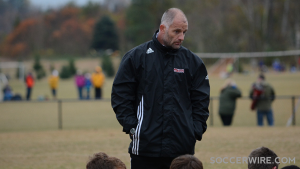 Coaches who played the game, live for the game, and want to give back their experiences; all know what a good environment looks like. And if they aren’t heard, they will not want to “play” for that team – meaning they won’t want their teams to be in that league.
Coaches who played the game, live for the game, and want to give back their experiences; all know what a good environment looks like. And if they aren’t heard, they will not want to “play” for that team – meaning they won’t want their teams to be in that league.
Leagues – “club-centric” or not – that prioritize developing players are where today’s good coaches want to be, and the best way to prioritize player development is to put people who know how in charge of the competitive environment.
…the best way to prioritize player development is to put people who know how in charge of the competitive environment
Until these older competitions are willing to throw out their competitive structure and rules that inhibit the flexibility of modern player development environments in favor of ones designed by their own club members, the talent flight will continue.
+READ: U.S. Soccer Development Academy admits four new clubs from California, Florida, Maryland, NYC
That may be okay if a league is only worried about business income, because for now, soccer is still a huge sport with lots of levels of play and teams willing to pay to do so. But for leagues that care about playing a real role in helping develop World Cup winners of tomorrow, it may already be too late.
To find out, they need to pay attention to what their customers are asking for immediately – letting coaches who know how be the ones to dictate the best player development environment.
SOCCERWIRE MARKETPLACE
- visitRaleigh.com Showcase Series 2025, hosted by NCFC Youth
- OFFICIAL MANCHESTER CITY SOCCER CAMPS
- Wanted Licensed Youth Soccer Coach
- Join Official Elite Summer Soccer Camps with Europe’s Top Pro Clubs!
- The St. James FC Travel Staff Coach - North (Loudoun) & South (Fairfax)
- The St. James FC Girls Academy (GA) Head Coach - 2 teams
- The St James FC Boys Travel Tryouts
- OFFICIAL BAYERN MUNICH SUMMER CAMPS U.S.
- JOIN THE ALLIANCE!
- OFFICIAL FC BARCELONA CAMPS U.S.











